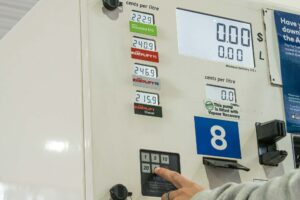The Indian Government’s plan to dramatically expand coal power production is being buffeted by growing concern about worsening air quality, sluggish power demand, one-third of existing coal plants sitting idle and massive coal stockpiles at power plants and mines.
A study by Tsinghua University in China and the US-headquartered Health Effects Institute (HEI), which was released last week, estimated coal use in China caused 366,000 premature deaths in 2013.
While the study authors concluded China would need to pursue “even more aggressive strategies” to curb the use of coal in order to reduce the staggering health burden by 2030, HEI’s President, Dan Greenbaum, bluntly stated “India’s situation is getting worse at a much faster speed than China.”
“It is definitely the case because India has not taken as much action on air pollution,” he said.
While the Modi Government has repeatedly promoted the goal of tripling domestic coal production by 2020 to fuel a dramatic increase in coal power generation, the goal looks increasingly fanciful.
Currently about one-third of India’s 211 gigawatts of installed thermal power capacity – predominantly coal plants but including some gas units as well – is lying idle. (For the sake of international comparisons, the entire coal plant capacity of Australia is about 27 GW, while the US has just over 300 GW and Germany 54 GW.)
The reasons for India’s vast amount of idle capacity are varied.
Some plants have long been shut because of a lack of cooling water. Others have been shut because of technical problems requiring maintenance or idled because they are uneconomic. In other cases some plants have coal supply agreements but not power purchase agreements while other plants have the opposite problem. Other plants which have been built have neither fuel supply agreements nor power purchase agreements.
Compounding the thermal power generators’ problems has been sluggish power demand and debt-laden distribution utilities (‘discoms’) preferring to buy limited power because of their dire financial circumstances. (A recent government-backed restructuring of the discoms’ finance has had little effect to date.)
After two years of brutal drought conditions, reasonable monsoonal rains have boosted hydro generation which has further undermined high-cost thermal power generation.
“Falling capacity utilisation translates into losses and inability of new power plants to service interest costs, leading to non-performing assets at banks,” an anonymous analyst told the Economic Times.
If the prospects for existing coal-fired generators look grim, they are even worse for those planning to build as much as a further 243 gigawatts of coal plants. Behind the scenes Indian government officials have begun issuing warnings against developers proceeding with new plants in the next three years.
When it came to office in May 2014 the Modi Government launched a crash-through campaign to boost coal production. Planning and environmental laws were weakened and massive mine expansions waved through with minimal review.
While Coal India – a government-owned company which produces about 80 per cent of India’s coal – dramatically expanded coal production, it soon found that its biggest problem was a lack of customers.
Earlier this week India’s Coal Secretary, Anil Swarup, bemoaned that “Coal India is today running after the client to take coal … Coal India doesn’t know what to do with the coal. They had to cut down the production in order to save the coal from burning.”
One of the beneficiaries of the glut is the government-owned power generator, NTPC.
Back in 2014-15 financial year NTPC imported about 16 million tonnes of thermal coal. Last year it pared this back to 9.5 million tonnes but expects to import only 1 million tonnes this year from a pre-existing contract.
With an estimated 45 million tonnes of coal stockpiled at Coal India mines, NTPC is under increased pressure to use only domestic coal. “With power demand remaining flat, the situation would not warrant any more coal imports this year,” an anonymous government official stated.
NTPC, which generates almost one-quarter of India’s electricity and estimates it will use almost 170 million tonnes of coal this year, is likely to end coal imports next year and rely on coal supplied from Coal India as well as new mines of its own it is commissioning.
Increased use of domestic coal will deliver yet another shock to the global coal market but will only make India’s air quality worse.
But even NTPC, India’s largest coal power company, has seen the writing on the wall as far as growth prospects for India is concerned. The Economic Times has indicated that NTPC will alter its expansion plans to focus more on renewables and away from coal, and revise upwards its existing target of 10GW of renewables by 2020. This will make NTPC India’s largest renewable energy company.
While India has announced an ambitious target of 175 GW of renewable capacity, including 100 GW of solar by 2022, it has also continued to back the building of new coal plants.
Solar is already cheaper then coal plants in India based on imported coal, with the latest record low price in Chile – albeit in favourable conditions – indicating costs are falling faster than many had previously expected.
The sharpening tussle between renewables and coal for new and existing electricity demand will have profound consequences for India’s air quality, forests, water supplies and be one of the decisive turning points in the struggle for a liveable climate.
With many private power companies struggling with low capacity utilisation rates, high debt levels and grim finances, India’s grand coal industry expansion plans are looking shakier than ever.
Bob Burton is the Editor of CoalWire, a weekly bulletin on global coal industry developments. (You can sign up for it here.) His Twitter feed is here. Ashish Fernandes is Senior Campaigner at Greenpeace. His Twitter feed is here.










